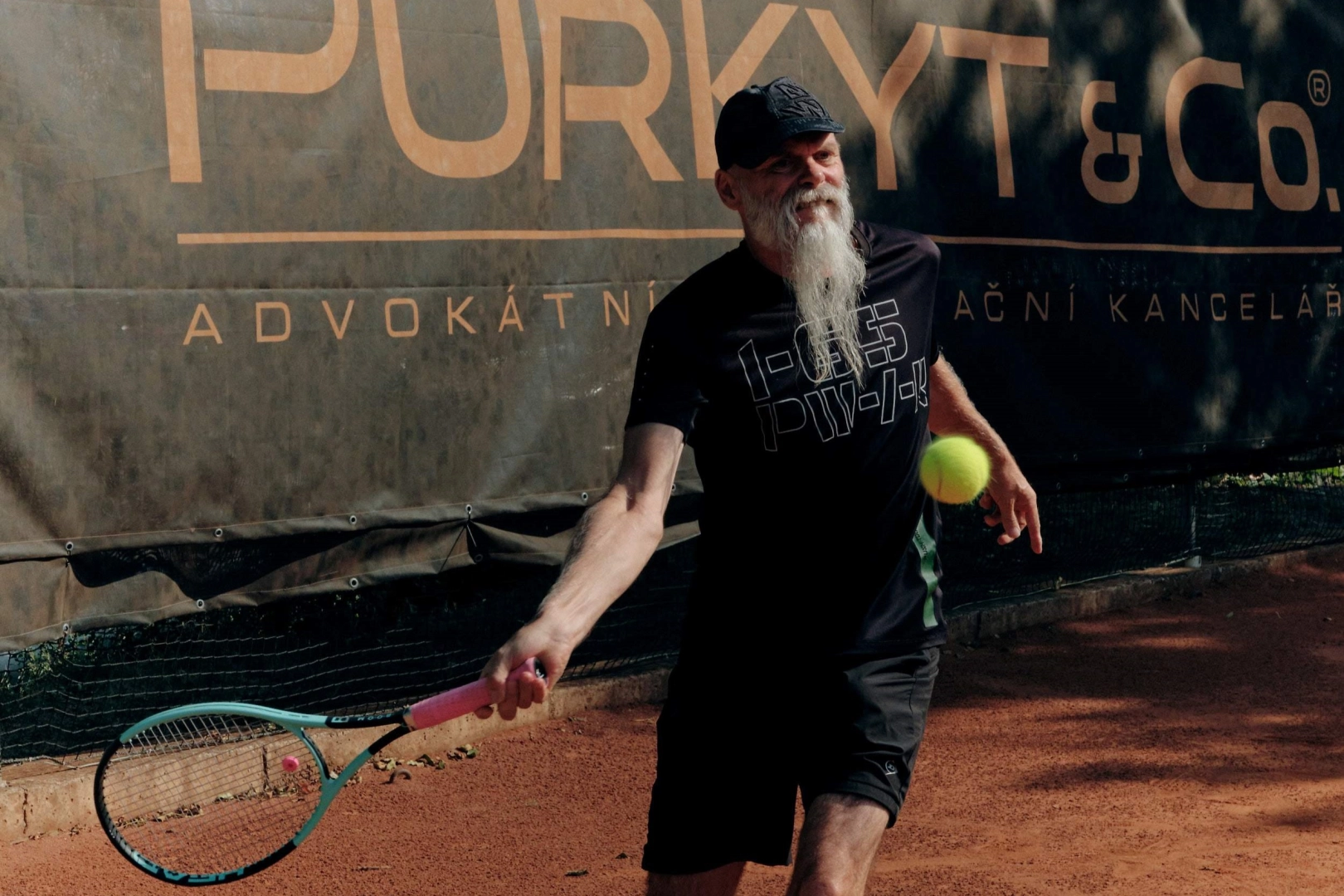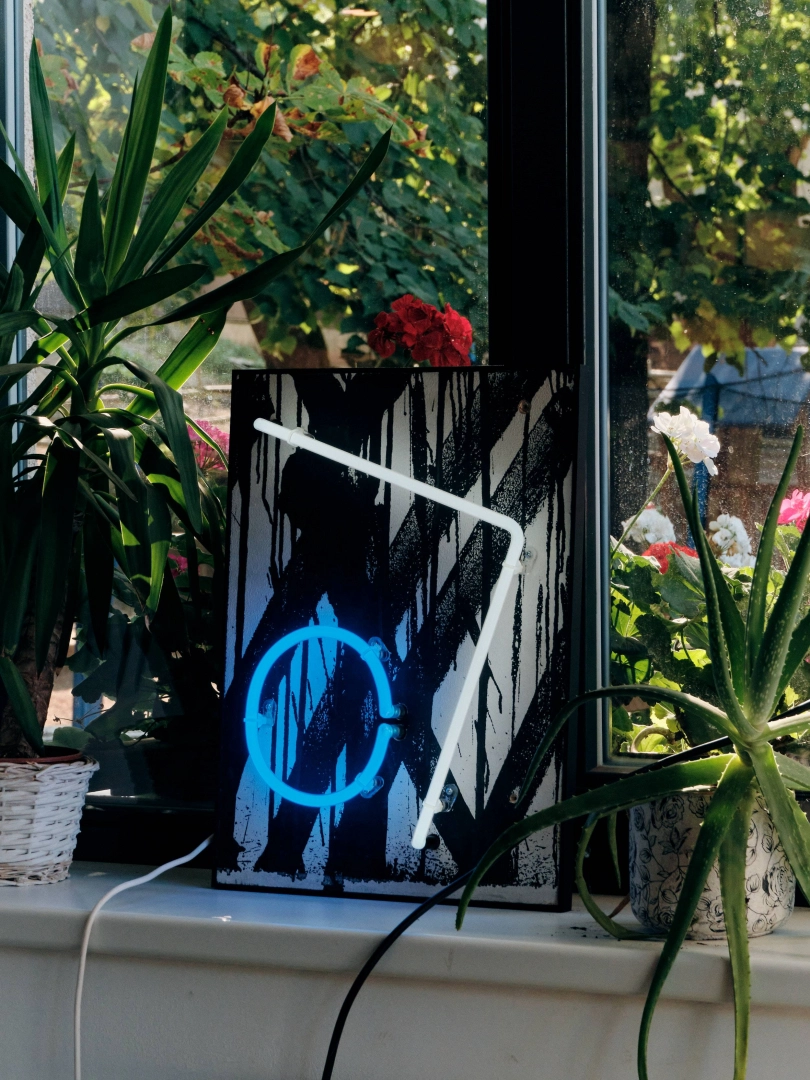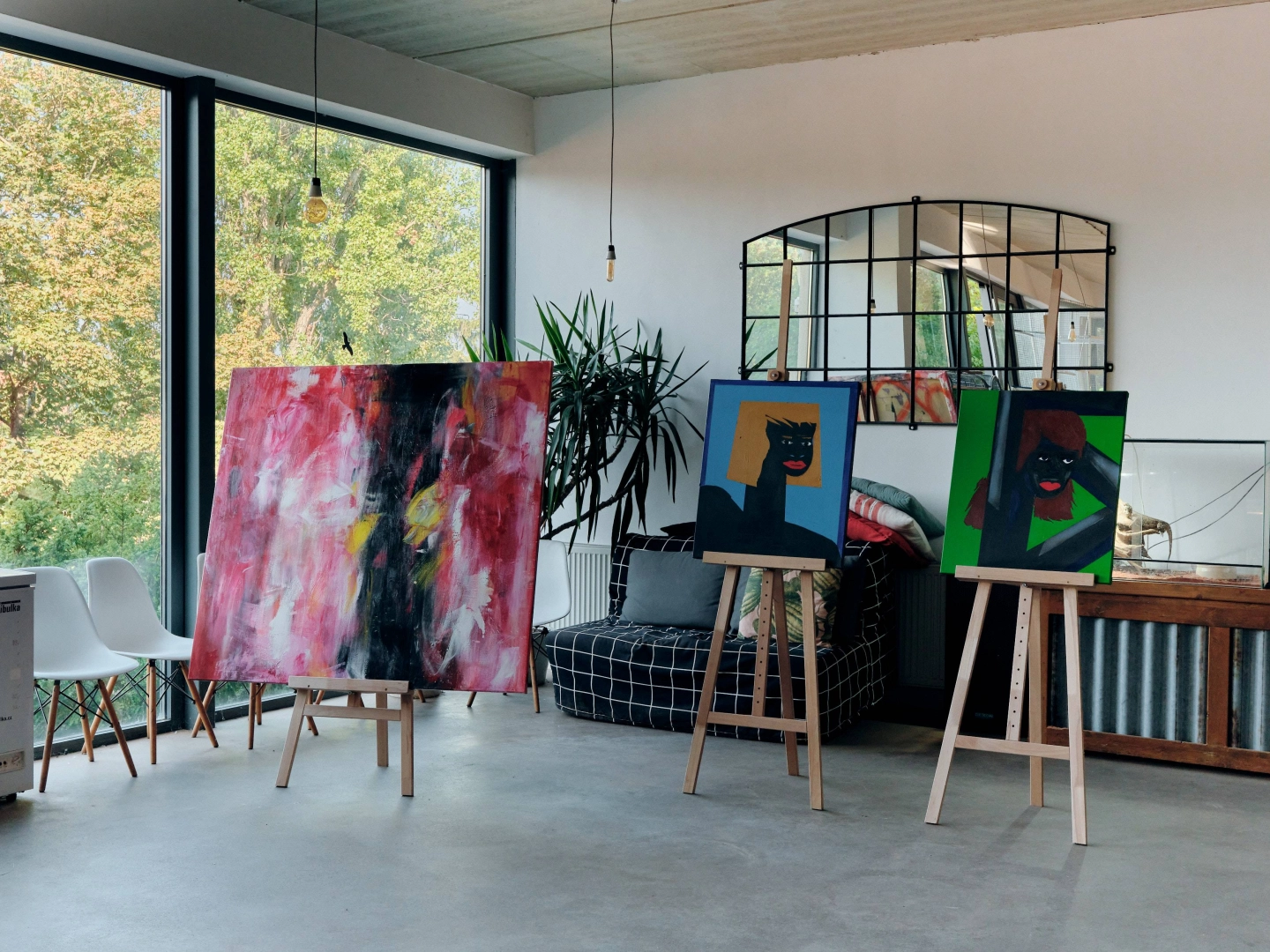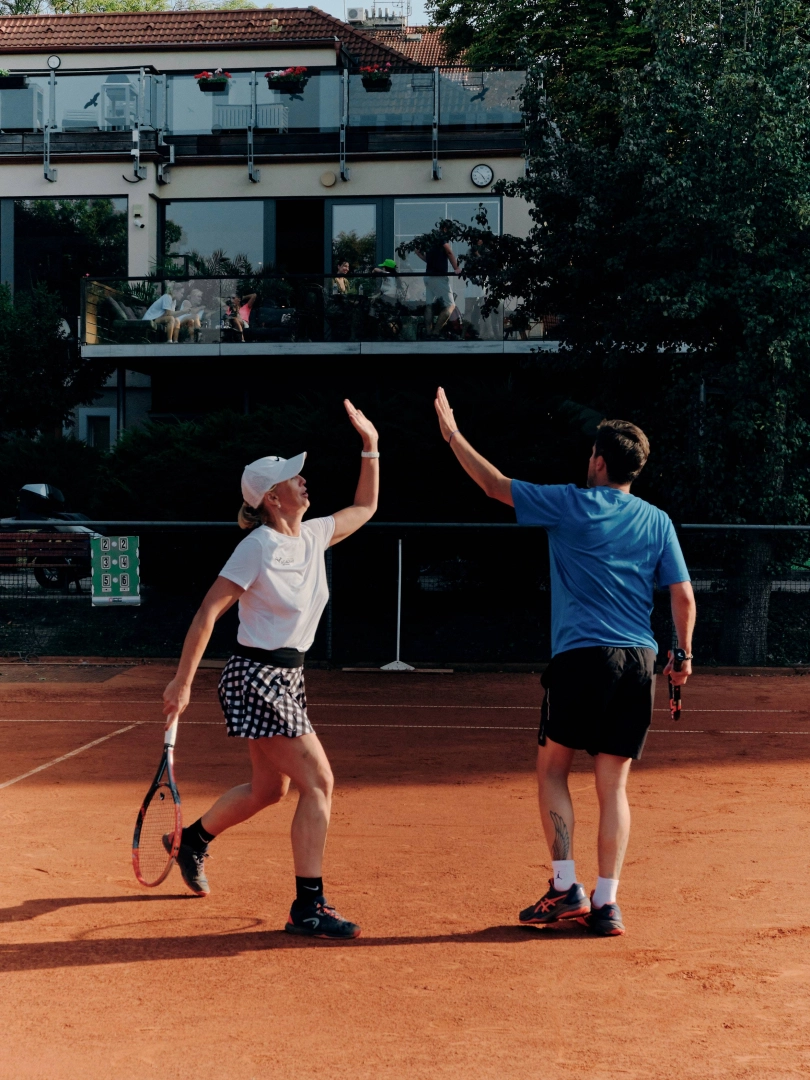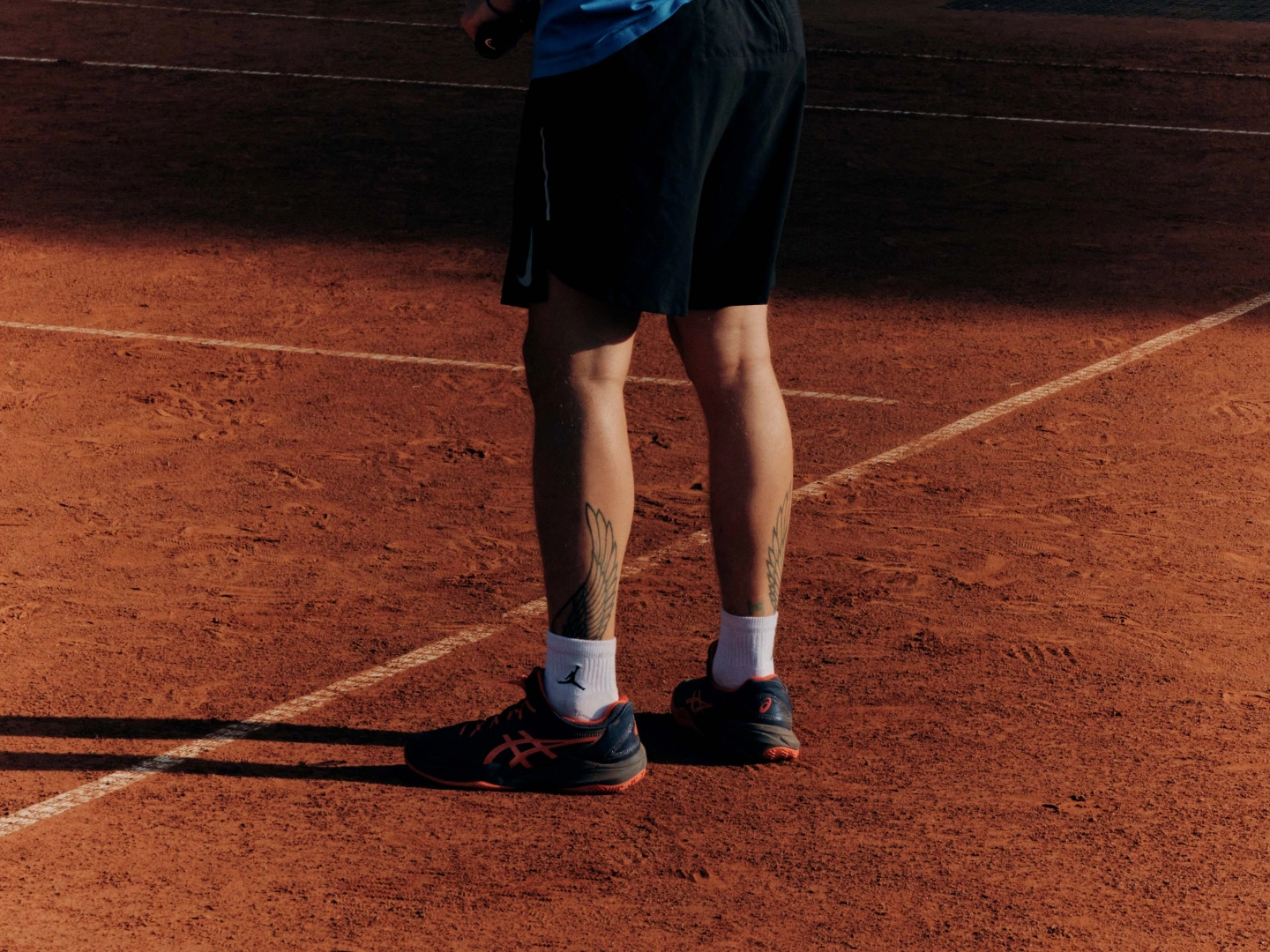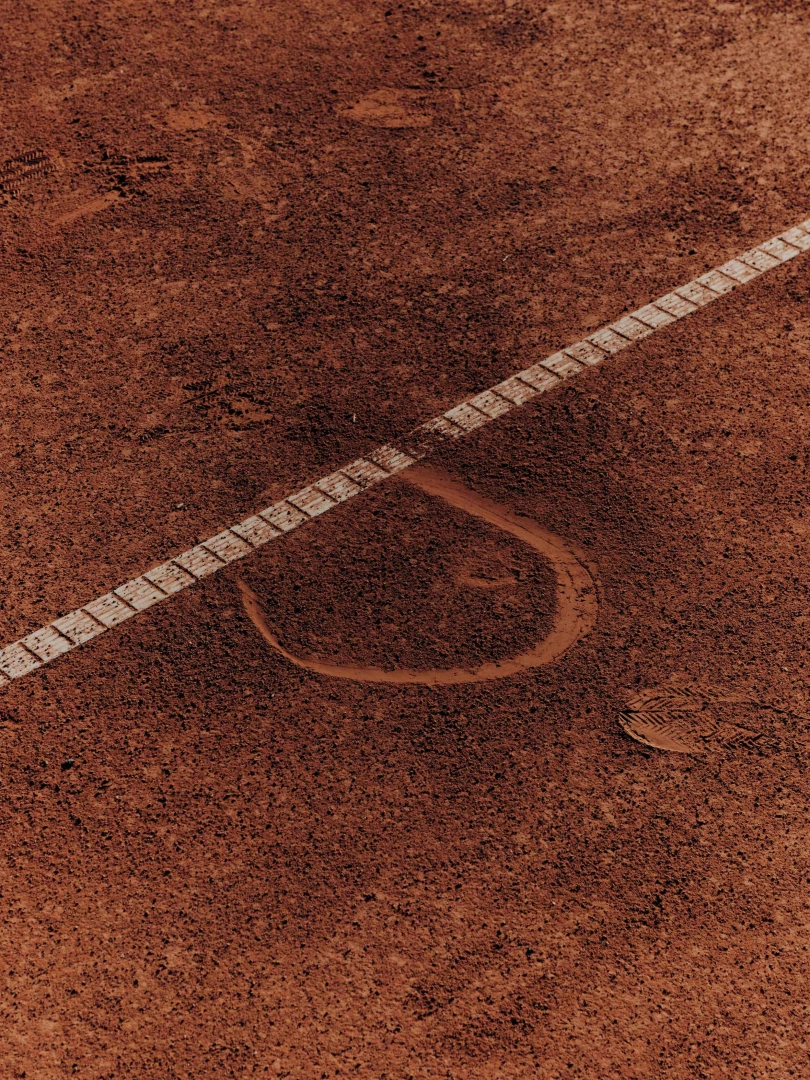The tennis courts at Cibulka are buzzing with activity today. It’s a Friday afternoon, and though it's already September, the sun is still warm. Accompanied by music from DJ Bangladezo, a unique match is underway – the Kopea Open, a tournament for artists and art collectors. The tennis courts are packed, as is the terrace of the nearby restaurant, where spectators relax. All eyes are on the courts, where a doubles match is taking place. Instead of paintbrushes, well-known Czech artists such as Jan Heres, Roman Franta, Jan Kaláb, Michal Škapa, Matěj Olmer, and Jan Mikulka are holding tennis rackets. The air is filled with the sounds of balls being struck, cheers, and occasional shouts from both players and the crowd: “These guys are soloists!”, “Nicely done!”, and even the odd exclamation of frustration after a missed shot: “Oh, come on!”
The players are warming up, getting ready for their matches, which are being played simultaneously on two courts in a shortened format. I sit down on a bench next to two men watching the action: 'Who are you rooting for?' I ask. 'Mikulka,' one of them replies. 'I’ve never seen him play, but he looks promising. If I had to bet, though, I’d put my money on Franta—he’s in great shape. But I didn’t bring any money, and of course, gambling is against my principles,' he adds with a laugh.
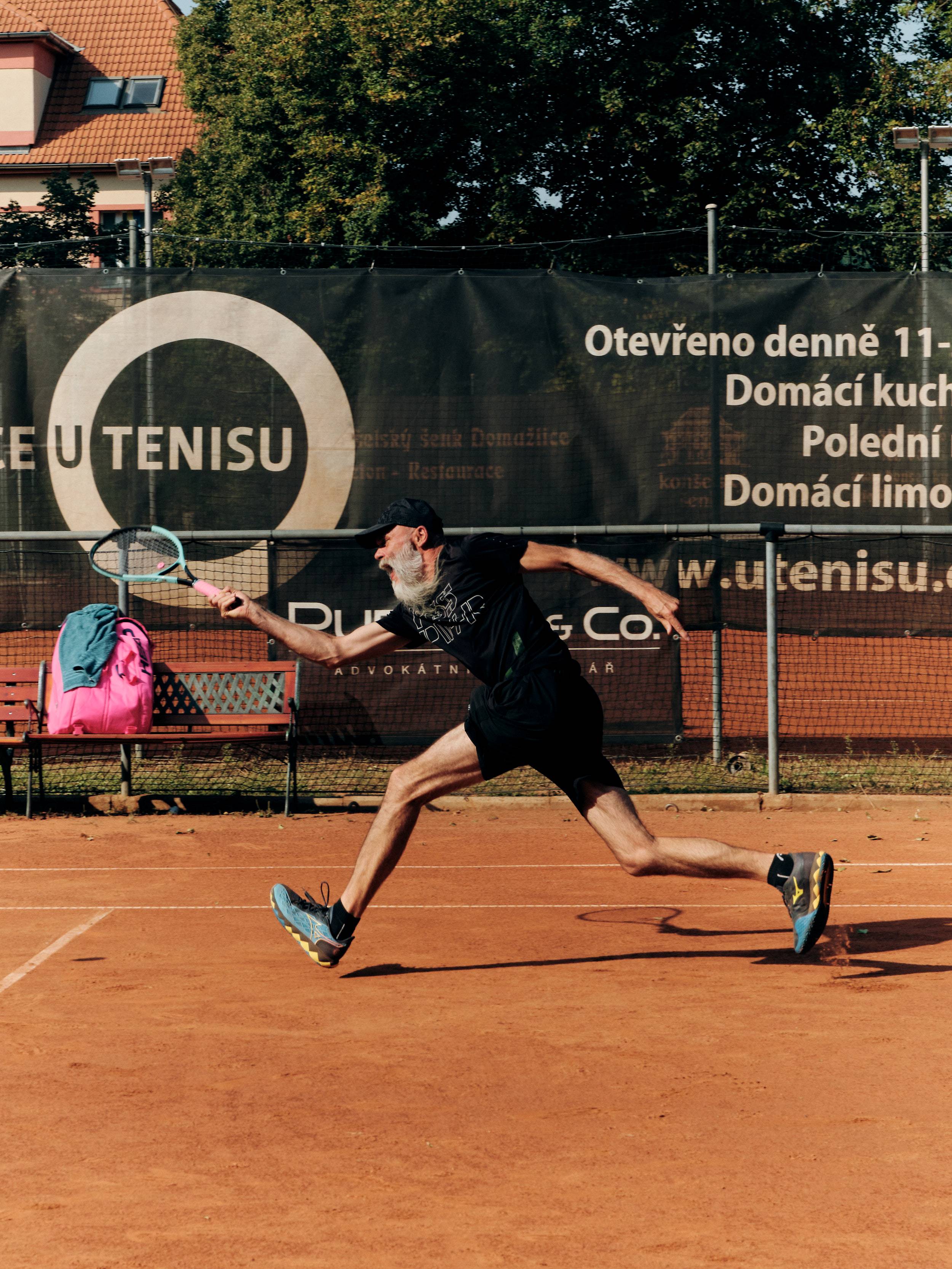
Indeed, Roman Franta is relentlessly running his opponents around the court. 'Not that high again, for God’s sake!' he yelled across the net at his opponent, who miscalculated one of his shots. As Franta later explains to me, he used to play district and regional championships as a kid, and even in the national league. But over time, his interest shifted to art. 'During my military service, I had a lot of free time, so I started drawing. After the army, I applied to the academy, and when I got in on my second attempt, tennis took a backseat. I focused solely on art and didn’t touch a racket for 20 years.'
Still, Roman Franta doesn’t believe that you can completely forget tennis skills: 'The technique stays with you, but you need to get your fitness back.' He returned to tennis in Dolní Počernice, where he has a studio and where there are tennis courts. 'I saw people playing there, so I thought, why not give it another shot? I started in the third division, then moved up to the second, and now I play competitively.'
His return to tennis has also influenced his artwork. He is well-known for his series of paintings called Grand Slam. 'In Grand Slam, I merged the two things I love – art and sport. Each painting represents one of the major tournaments, like Wimbledon or the US Open, while also carrying references to notable artists like Warhol or Hockney,' Franta explains. He now competes in tennis at the international level, including in ITF tournaments.
On the courts, I hear organizer Aneta Kopecká cheering the players on: 'Come on, come on!' – while still managing to ensure the smooth running of the entire event. Aneta is not only a passionate tennis player but also a gallery owner. I stop to chat with her as we watch the match together. 'I’m really sad I can’t play today,' she confides. 'I had an accident in the summer. I fell off my bike and broke my elbow.'
.jpg)
When I ask her what inspired her to organize the tournament, she explains: 'I’ve been playing tennis for three years with a coach here at Cibulka and I know many artists who have been around this environment for a long time. When I met them at exhibitions or outside of the gallery scene, we often talked about it. Gradually, more people joined in, and I discovered how many artists are actually passionate about tennis. I was surprised by how many of them play actively.'
„
I’m very expressive. I hit hard, I’m an attacker. And that’s how I paint too. It’s not like I sit and fuss over details; I need to move around when I paint.
The idea for the tournament came naturally, says Aneta. 'Following on from my coach, we started thinking about organizing a tournament. I also know many collectors who come to the gallery, and some of them play tennis. When I discussed this idea with them, I received a lot of enthusiasm. Everyone was on board. And that’s how it all started.'
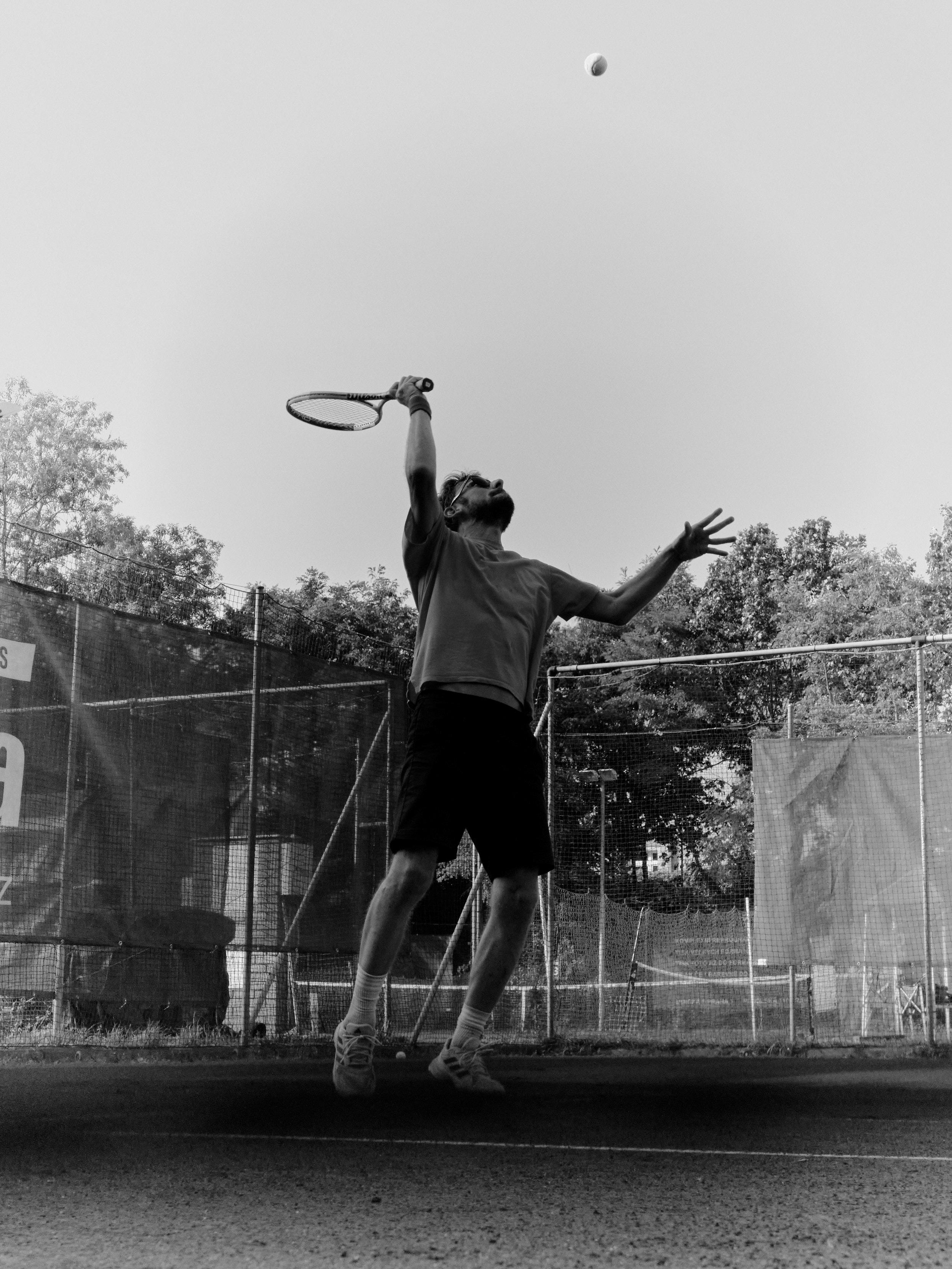
She sees tennis as a way to connect two different groups. 'Collectors and artists meet here in a friendly atmosphere outside the sterile environment of the gallery. They can see each other in a more relaxed setting.' When asked why they play doubles, Aneta responds practically: 'Doubles are more time-efficient and also less demanding. Some were concerned that they wouldn’t be in shape on their own, so this way it’s more comfortable for everyone. Plus, it helps build connections and a friendly atmosphere.'
Our conversation is abruptly interrupted when she needs to attend to something else on the court. I hear the person in charge of refreshments: 'Canapés, protein bars, and water – do you have everything?' I return to watching the match and ask the photographer Eda Babák, who is accompanying me, what he finds interesting about the event. 'That everyone is playing really well,' he says, surprised. 'I didn’t expect that. But I understand it; when you’re always using your head, sports are a great way to unwind.' He then quickly apologizes and runs off, calling back, 'The light is good now!'
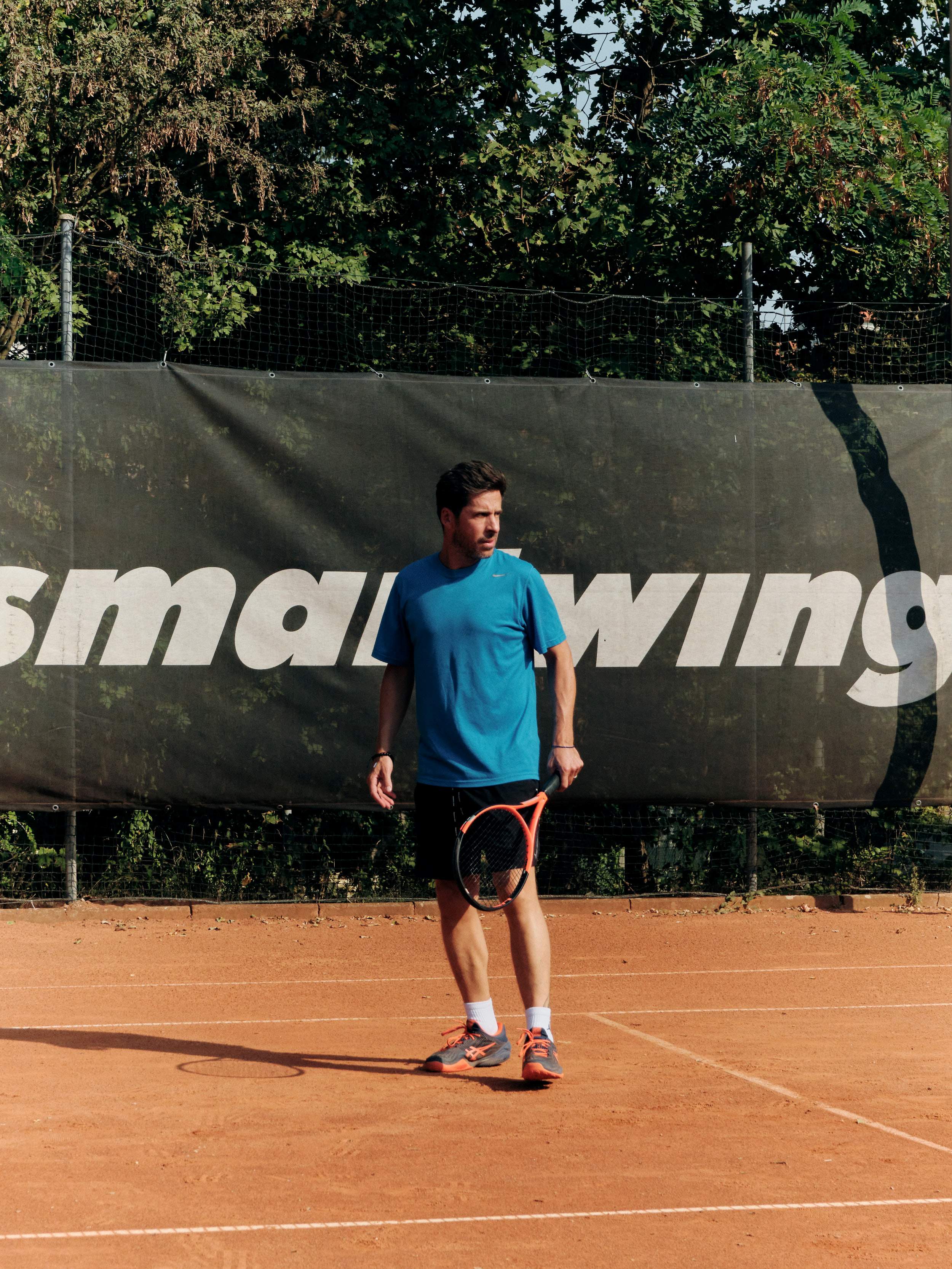
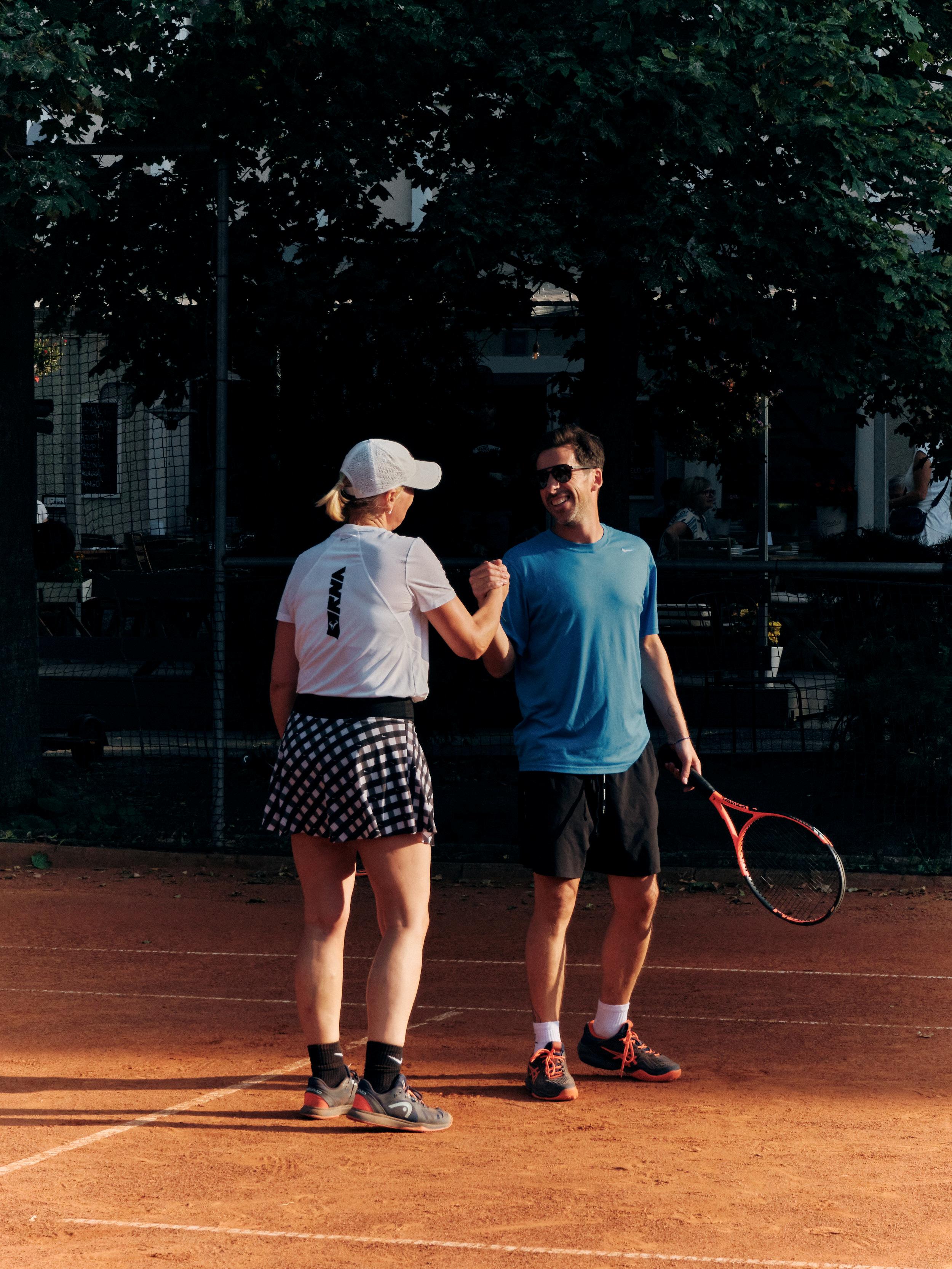
I look up at the terrace above the courts and see Jan Kaláb relaxing after his match. 'How are you feeling?' I ask. 'Pretty good,' he replies with a smile. 'We did lose the first match, but at least I’m not nervous anymore. I wasn’t the only one who made mistakes, so I’m taking it easy.' Kaláb's relationship with tennis is positive, though he found his way to it later: 'I only started playing three years ago. Last year I had a knee injury, so I missed the whole season. This year is my second season and actually my first tournament. Today I’m playing my first ever doubles match. It’s great, but I’m still learning,' he says modestly but with enthusiasm. 'It’s tough to catch up at an older age,' he adds with a laugh.
When asked if sports inspire him in his artistic work, he responds: 'For me, they’re more like separate worlds. Sport is mainly a way to clear my head from the studio.' When I ask about any parallels between his approach to art and tennis, he reflects: 'I try to do things as well as I can, whether I’m painting or playing tennis. But when you’ve only been doing something for a short time, you can’t do it as well as those who have been doing it their whole lives. It’s fun though, and it’s another motivation to learn something new. I enjoy it.'
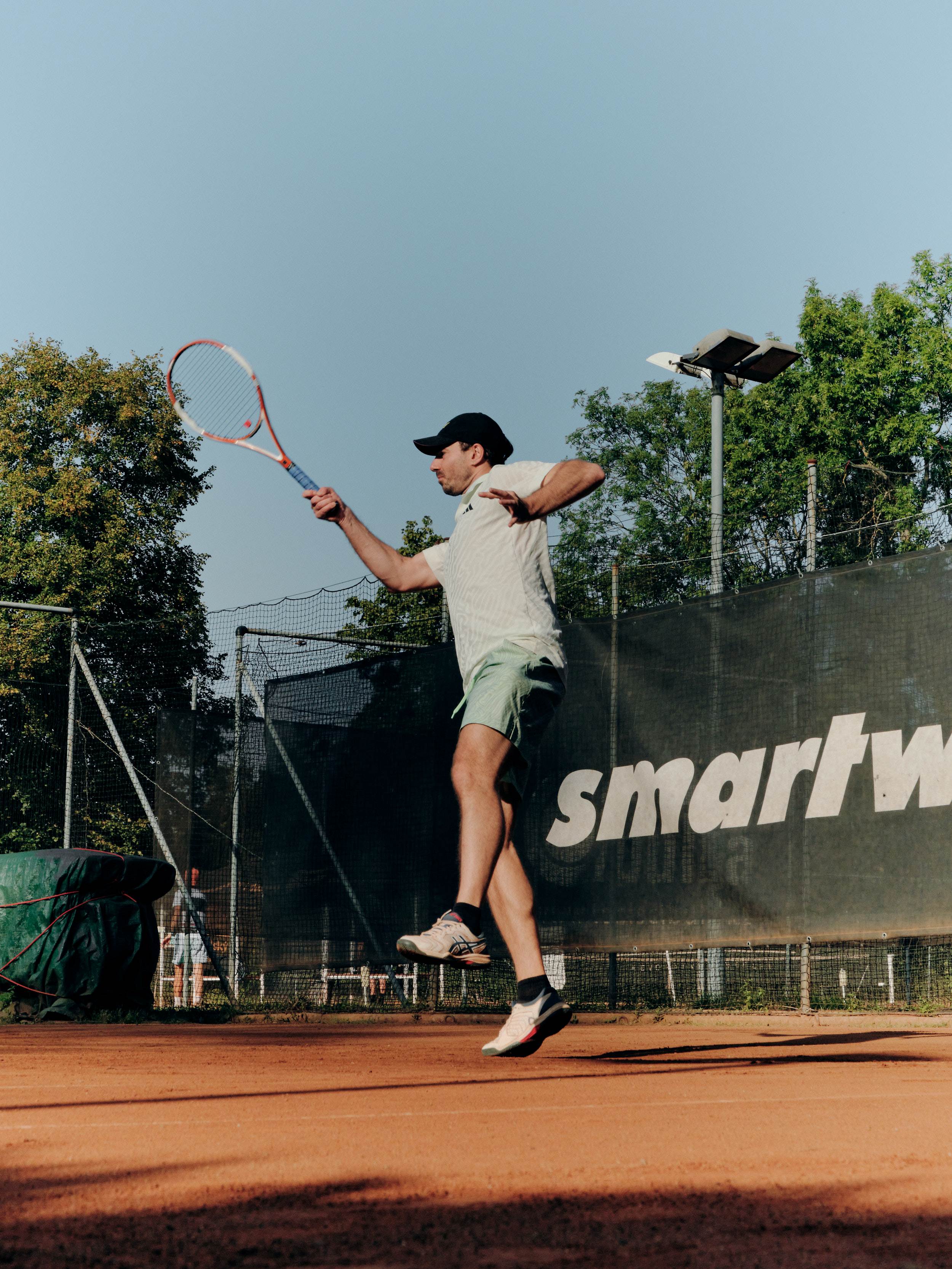
Jan Heres comes onto the terrace after his victorious match against Jan Mikulka. We sit for a while next to several of his paintings displayed here. 'How did you approach today? What were your expectations?' I ask. 'I mainly wanted to unwind,' Jan replies. 'Yesterday I had an opening in Ostrava, on Wednesday in Olomouc, and Thursday was quite demanding. The opening in Ostrava ran a bit late; we finished around half past one in the morning. This morning I drove straight from Ostrava here, so I had to take a break for about half an hour.' 'So you’ve had quite a lot on your plate,' I respond. 'What’s your relationship with tennis?' 'I started playing when I was young,' Jan says.
'I played competitively until I was about fifteen, in both junior and senior categories. Then I started attending art school at Hollarka and tennis took a bit of a backseat. I returned to it five years ago when I was around twenty-five. Now I play doubles with the guys; we have matches once a week. It’s mainly a way for me to stay in shape.' 'So you play quite regularly?' I ask. 'Yes, quite regularly, but sometimes I have longer breaks, like not playing for two or three weeks, depending on work,' he replies with a smile. 'How do you feel about the intersection of sports and your art?' 'They say it helps,' Jan responds. 'I studied under Rittstein, who swam and played tennis. He said it helps with mental health. Painting is physically demanding, and sport complements it.' 'Do you mean managing emotions?' I ask. 'Exactly,' Jan nods. 'To help calm oneself. Sports help me feel good.'
„
When you play tennis, you can prepare for it and see the result immediately. Art is a long-distance run. No one tells you right away if what you’re doing will be good. It might show over time, but it takes a while.
'Do you think there’s a similarity between how you play and how you paint?' 'Definitely! I’m very expressive, wild. (laughs) I hit hard, I’m an attacker. So I paint the same way. It’s not that I sit and fuss over details; I need to move around when I’m painting,' he explains with enthusiasm.
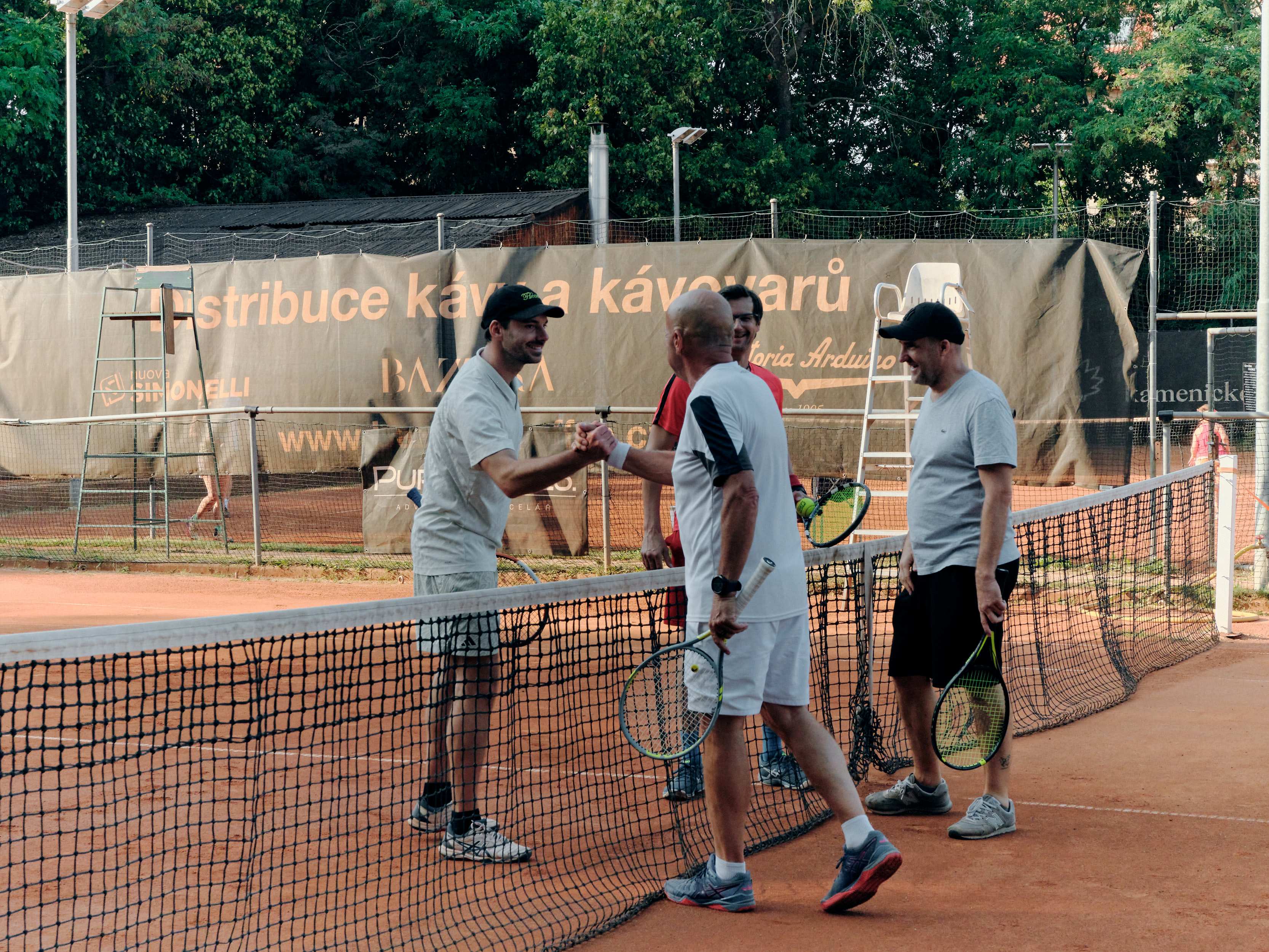
The match on the courts, however, shows no signs of quieting down. After a short break, the players return to the field and continue playing. Meanwhile, in the areas not currently in use, the groundskeeper is watering the clay. 'Why is he watering it?' I ask. 'Well, when it’s dry, it gets rutted and the ball bounces poorly. It gets dusty, and one line can be higher than another, making it harder to play. Plus, when the surface is dry, it’s more slippery.'
The games have been going on for several hours, and the atmosphere on the courts is still full of energy and sportsmanship. As I leave, the words Roman Franta shared at the end of our conversation about the connection between sports and art resonate in my mind.
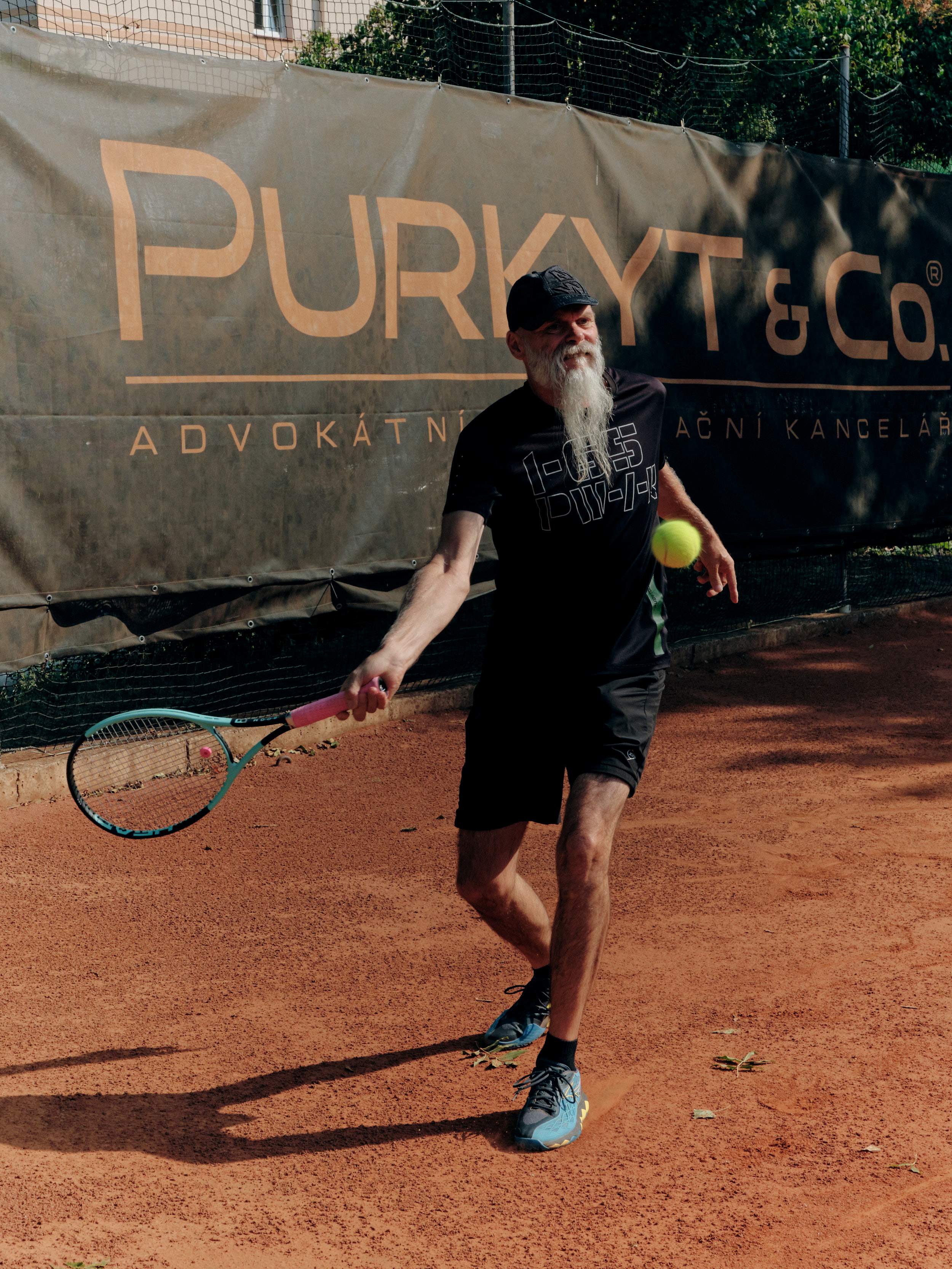
'I was thinking about it while playing tennis,' he starts. 'It’s actually a completely different world. When you play tennis, you can prepare for it and see the result immediately. If you prepare well, you win, you’re happy, and in two hours the match is over. The satisfaction is immediate. But art doesn’t work that way.'
He continues thoughtfully, 'Art is a long-distance run. No one tells you right away whether what you’re doing will be good. Over time, it might show, but it takes time. You start a new series, have exhibitions, and it takes a while for someone to notice, for someone to write about it. Today, almost no one writes about culture, newspapers have been reduced, everything is pushed online, but there’s so much of it. It’s a long-distance run.'
Then he smiles and adds, 'In tennis, you get immediate joy. In art, it comes much later, and sometimes not at all. But even so, you can be pleased that you created a good piece. It’s just that the feedback – the satisfaction from the audience or media – comes after some time, if at all.'

